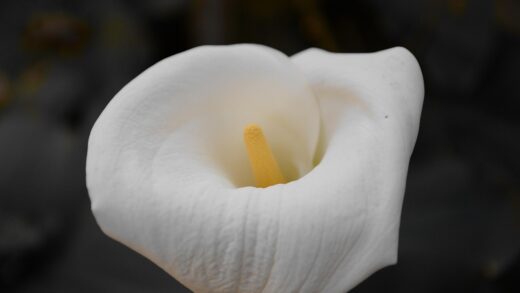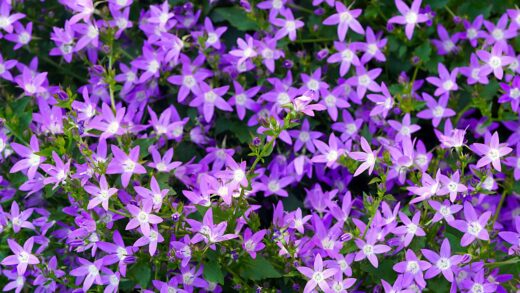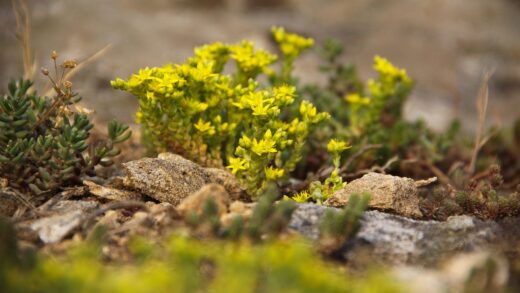The practice of pruning Lithodora diffusa is a simple yet profoundly important aspect of its maintenance, essential for preserving its health, vigor, and desirable compact form. This is not a plant that requires complex or intensive trimming, but rather a timely and gentle shearing to encourage its best performance. The primary purpose of pruning this evergreen ground cover is to prevent it from becoming woody and open in the center, a condition that can afflict older plants and detract from their appearance. By understanding the correct timing and technique for this task, you can ensure your Lithodora remains a dense, tidy, and floriferous mat for many years, continually renewing its vitality and maximizing its spectacular floral display each spring.
The fundamental principle of pruning Lithodora is to work with its natural growth cycle. The most critical pruning of the year should be carried out immediately after the main flush of flowers has faded, which is typically in early to mid-summer. This timing is absolutely crucial. By pruning at this point, you are removing the spent flower stems and encouraging a new flush of vegetative growth during the remainder of the summer. This new growth will carry the flower buds for the following year, so pruning at this time ensures you are not sacrificing next season’s blooms.
It is imperative to avoid the temptation to prune the plant back in the autumn or spring. Pruning in the autumn can stimulate new, tender growth that will be highly susceptible to damage from the first frosts, potentially weakening the entire plant before winter. Pruning in early spring, before it flowers, is an even greater mistake, as you would be cutting off all the flower buds that developed during the previous summer and autumn, resulting in a flowerless plant for that year. Adhering to the post-flowering schedule is the single most important rule for successful pruning.
The goal of this annual trim is twofold: to improve the plant’s appearance and to stimulate new, dense growth. Removing the old flower stems instantly tidies up the plant, restoring its neat, green appearance. More importantly, the act of cutting back the tips of the stems encourages the plant to branch out from lower down, leading to a much fuller and more compact plant. This process prevents the center of the plant from becoming bare and woody and ensures the foliage mat remains thick and effective as a ground cover.
The best time for pruning
The timing of pruning is paramount to the health and flowering of Lithodora diffusa, and there is a very specific window of opportunity for this task. The ideal and most effective time to prune is immediately after the plant has finished its main, spectacular wave of flowering. For most regions, this occurs in the early part of summer, often in June or early July. This post-flowering trim allows the plant the maximum amount of time throughout the rest of the summer and early autumn to produce healthy new growth, which is where the following year’s flower buds will form.
More articles on this topic
Carrying out this task promptly after the flowers have faded is key. Delaying the prune until late summer or autumn is a common error that can have significant negative consequences. If you prune too late in the season, you risk cutting off the newly formed, invisible flower buds that are developing for the next spring. This will lead to a severe reduction in the number of flowers, or potentially no flowers at all, in the following year. The plant also needs adequate time for its new growth to mature and harden off before the onset of cold weather, and late pruning does not allow for this.
Aside from the main annual prune, very little other trimming is required. However, if the plant produces a sporadic, smaller flush of flowers later in the summer, these can be deadheaded or lightly trimmed off as they fade to maintain a tidy appearance. In the spring, it is advisable to wait until new growth has clearly started before doing any trimming. At this point, you can selectively prune out any stems or tips that have been damaged by winter cold, cutting them back to a point where healthy new growth is emerging. This is purely a cleanup task and should be done with a light hand.
In summary, the pruning calendar for Lithodora is simple but strict. The main, structural prune should be a non-negotiable task scheduled for right after the spring-summer flowering period. Any other trimming should be limited to cosmetic tidying or the removal of winter-damaged parts in the spring. By adhering to this schedule, you work in harmony with the plant’s natural rhythm of growth and flowering, ensuring its long-term health and a reliable and stunning floral display each year.
Proper pruning techniques
The technique for pruning Lithodora is refreshingly simple and does not require specialized skills, making it an accessible task for all gardeners. The most effective method is to give the entire plant a light shearing or haircut using a sharp, clean pair of garden shears or hand clippers. The aim is to trim back all of the season’s growth, including the spent flower stems, by approximately one-third. This should be a uniform trim across the entire surface of the plant, helping it to maintain a neat, mounded, or mat-like shape.
More articles on this topic
A crucial point to remember during this process is to only cut into the green, leafy part of the stems. Lithodora does not reliably produce new growth from old, bare wood. Therefore, you must avoid cutting back so hard that you are left with just woody stumps. Always ensure that there are healthy leaves remaining below your pruning cuts, as this is where the new shoots will emerge from. This gentle approach is key; a hard renovation prune on an old, woody plant is rarely successful and can often kill it.
Before you begin, make sure your pruning tools are sharp and clean. Sharp blades make clean cuts that heal more quickly and are less likely to crush the plant’s stems, reducing the risk of disease entry. Cleaning the blades with rubbing alcohol or a disinfectant wipe before use is also good practice, as it prevents the potential transfer of plant pathogens from one plant to another in your garden. This simple bit of hygiene is an important part of responsible plant care.
After completing the pruning, it is beneficial to water the plant well and, if you haven’t already fertilized that year, provide a light feed with an ericaceous fertilizer. This gives the plant the resources it needs to recover from the pruning and to push out a strong flush of healthy new growth. The combination of pruning, watering, and feeding will invigorate the plant, ensuring it quickly greens up and spends the rest of the season developing a dense structure and setting the stage for the following year’s floral extravaganza.
The risks of improper pruning
Improper pruning, whether through poor timing or incorrect technique, can cause significant harm to a Lithodora plant, and in some cases, can be fatal. The most damaging mistake is to prune the plant back too hard, cutting deep into the old, brown, woody base of the stems. This plant has very few dormant buds on its old wood, which means it is largely incapable of regenerating growth from these areas. A hard prune will often result in large, permanent bare patches or the complete death of the plant, as it simply has no mechanism to recover.
The consequences of pruning at the wrong time of year are primarily related to flowering. As has been emphasized, pruning in early spring removes the flower buds that have been patiently developing since the previous summer. This results in the immense disappointment of a green but flowerless plant. While this may not kill the plant, it eliminates its main ornamental feature for an entire year. It is a frustrating and entirely avoidable error that stems from a misunderstanding of the plant’s growth and flowering cycle.
Pruning too late in the autumn also carries significant risks. This late-season trimming can stimulate the plant to produce a flush of new growth at a time when it should be preparing for winter dormancy. This tender new foliage is extremely susceptible to frost and cold damage. When this new growth is killed by a hard freeze, it can create entry points for disease and can weaken the overall health and winter hardiness of the plant, making it less likely to survive a harsh winter.
Another, more subtle risk of improper pruning is the creation of a poor plant structure. Simply snipping off individual spent flowers (deadheading) without also trimming back the foliage does little to encourage a dense habit. Over time, this can lead to the plant becoming leggy and sparse. A proper shearing, by contrast, trims both the flower stems and the top layer of foliage, which is what stimulates the all-important branching and creates the desirable, thick mat of foliage.
Dealing with old and woody plants
Over time, even with good care, a Lithodora plant can naturally become woody and less vigorous, with a bare, open center and growth concentrated around the edges. When a plant reaches this stage, it is important to recognize that a hard “rejuvenation” prune is not a viable option due to its inability to sprout from old wood. Attempting to cut the entire plant back to a few inches from the base, as you might with other shrubs, will almost certainly kill it. Therefore, a different strategy is required to manage an aging specimen.
One approach for a plant that is just beginning to open up in the center is a slightly more targeted form of the annual prune. After flowering, in addition to the overall light shear, you can try to selectively cut a few of the longest, oldest stems back a little further, ensuring you are still cutting to a point above some healthy side shoots or leaves. This can sometimes encourage new growth from closer to the plant’s center. However, this must be done cautiously and incrementally over a couple of seasons, and it is not a guaranteed fix.
A much more reliable and effective strategy for dealing with an old, woody plant is to plan for its replacement through propagation. In early summer, before the plant has declined too far, take several semi-ripe cuttings from the healthy, leafy tips around the plant’s perimeter. These cuttings root relatively easily and will provide you with vigorous new young plants. You can then grow these new plants on in pots, and once they are well-established, you can remove the old, declining parent plant and replace it with its fresh, youthful offspring.
This cycle of renewal is a fantastic and sustainable way to ensure you always have a vibrant and healthy Lithodora in your garden. Instead of fighting a losing battle to rejuvenate a plant that is past its prime, you embrace the plant’s life cycle and proactively create the next generation. This approach is far more successful than attempting a risky and likely futile hard prune and guarantees that you will not have to endure a gap in the stunning blue display in your garden.


















